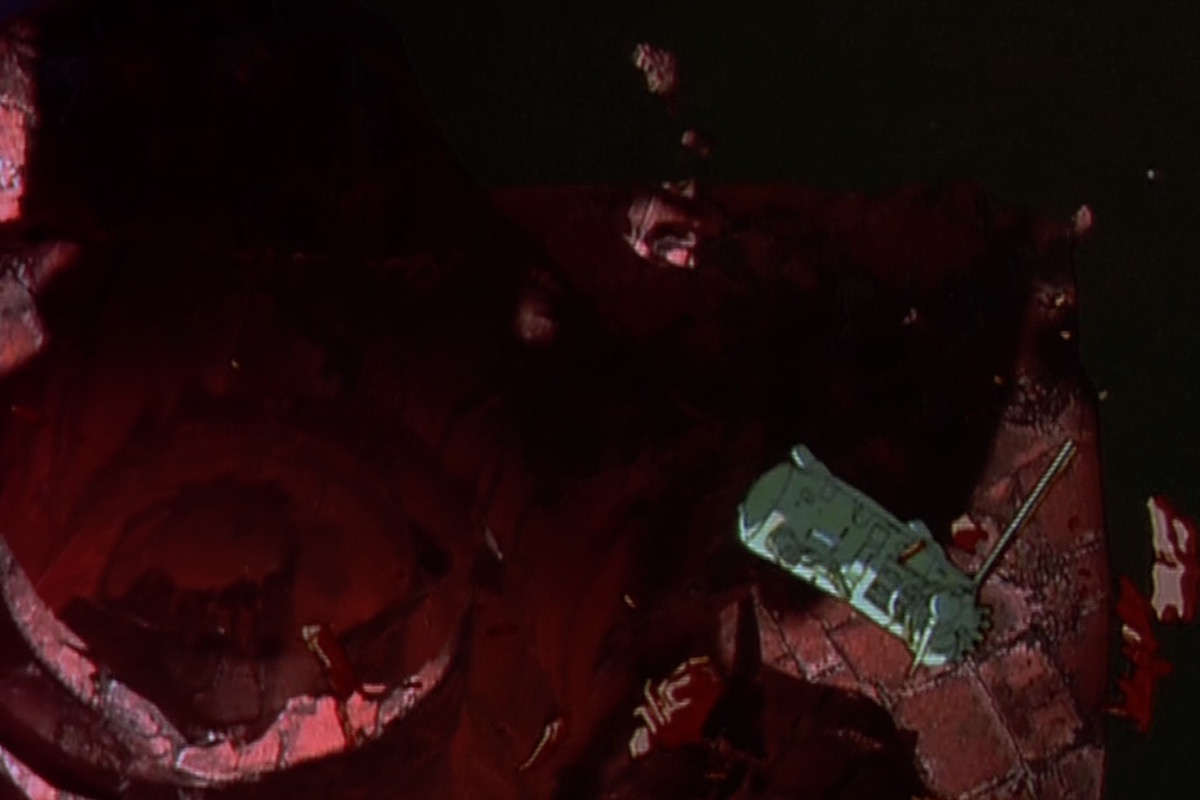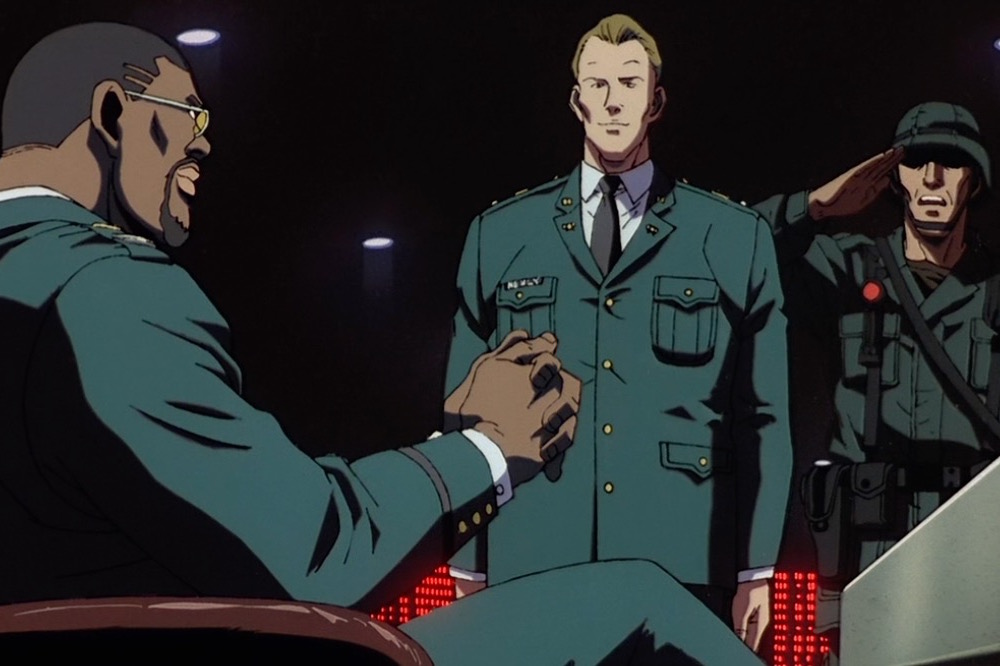
Edward E. Carlson designed the Space Needle for the World Fair in 1965 to represent the Space Age, foreshadowing Seattle as one of the cities of the future. Now an international leader in technological innovation and in the midst of a development boom, it is easy to say the Seattle has lived up to its treasured monument.
In many ways, living in Seattle today can be told as a science fiction tale from 20 years ago. But not all signs point to the optimistic future that many had hoped for.
The cross-cultural foresight of anime writers Katsuhiro Otomo in “Akira” and “Memories” and Mamoru Oshi “Ghost in The Shell” imagined much of what we are experiencing today: the ever growing stratification, the effects of advancing technology on our psyches, and the influences of private entities own on our daily lives.
Akira (1988)

“Akira” is a pop culture classic. It inspired Kanye West’s Stronger video, a recent collaboration by streetwear giant Supreme and even influenced the popular Netflix series “Stranger Things.”
The movie is set thirty years after Akira, a young child with telekinetic powers, destroys Tokyo during a weapons experiment. Another child named Tetsuo, develops similar telekinetic powers as Akira and poses a new threat for Neo-Tokyo. This is happening as Neo-Tokyo is in the midst of large civil unrest because of the corrupt government’s tax reform. There are many scenes of the police brutalizing citizens to assure property and buildings remain safe. The threat of Tetsuo and the civil disobedience, allows the Colonel to declare a State of Emergency to assume control of the government. This results in a more authoritarian presence as that The Colonel begins to strike the city in an effort to neutralize Tetsuo, reducing the citizens in the area to just collateral.
Real-life modern-day Seattle has a state-of-emergency of its own — the homelessness crisis.
The state of emergency was declared in 2015. Since then, the city has been relentless in sweeping homeless encampments, where the police are notorious for humiliating and abusing the inhabitants. It is common for people to lose their homes and belongings all in the same sweep. The city then directs people to overfilled homeless shelters and services that they do not qualify for.
There doesn’t seem to be a change in policy from newly elected Seattle Mayor Jenny Durkan, who whose campaign received $300,000 from Amazon through a network of organizations.
During the past month, the city is spending $1.1 million to fence off bridges and freeways from homeless people, citing public safety and sanitation. In the new $34 million budget to combat homelessness, the city removed funding from immediate shelters and re-allocated that money to rapid rehousing which is located outside of the city limits. The move is being justified as a switch to programs that offer routes to permanent housing, but it shifts the priority to moving homeless people out of the city, wherever that may be. Government powers are being used at the expense of the poor and working class people.
Just like the dystopian future depicted in “Akira,” we are seeing local policies and increased use of military tactics against the public. The homeless people dying in the streets are collateral damage in the city’s overall vision. These types of decisions creates mistrust against our elected leaders.
Ghost in the Shell (1995)

“Ghost in the Shell” is set in the year 2029, where most humans have cybernetic enhancements, including their brains. Motoko Kusinagi is newest development of cybernetic technology, she has a fully machine body with a human brain.
Like many people in Seattle, Motoko has no sense of personal sovereignty and is going through an existential crisis. Motoko can’t quit her job because the state has the power to repossess both her body and memories. Her job leads her to further questions. The state tasks her with tracking down a hacker named the Puppet Master who can hack people’s minds and replace their memories. The Puppet Master, revealed to be a virus that was created by a foreign government to gain political and economic advantages, becomes sentient and declares himself to be living. The Puppet Master seeks out Motoko because they are both in search of their own personhood.
Private entities are making decisions about how and why technology will be developed, which will have an intimate effect on our lives. The emerging industry of cybernetics is integrated with our bodies. We are already facing the moral problems of companies like Apple and Google selling the data we generate off our devices. It remains to be seen whether we will own the data that our bodies create.

Vice’s Motherboard featured a story about Amal Graafstka’s Seattle-area company, Dangerous Things. Graafstka sells implantable Radio Frequency Identification Chips (RFID) chips out of his Mount Vernon garage. He told Motherboard that his inspiration for developing biohacking technology was “to fundamentally break out of our heritage and change what it means to be human the point where we have more freedom and more capabilities.” Graafstka intends for this technology to “keep expanding human consciousness and understanding of the universe.”

Amal Graafstka expresses the same sentiment as Motoko — the need to be more than what we already are and the power to physically shape and alter our appearance and abilities. Graaftska is willing to spend his lifetime and cash to make it possible. Early adopters like Graafstka will shape the applications and directions of this technology.
For one person to have that much potential to influence a generation of people, from his garage, is a scary thought.

As we continue to isolate ourselves from communities and become increasingly fixated on our technology, the more we play into hands of the connected corporate system. Technological advancements no longer come out of publicly funded research, which theoretically benefits everybody. We have to trust the new and cutting edge technology being developed by privately funded innovators — entities that do not exist for the benefit of the public.
Memories (1997)
“Memories” is a 3-part series that features stunning art and captivating story lines.
The first story is called “Magnetic Rose.” In the year 2092, space junkers answer an S.O.S call from an abandoned private space station that eventually leads to their doom.

While in real life, humanity has not reached the point of space junking, Seattle is heavily involved with the private development of space stations, satellites and spacecraft.
In November, the Museum of Flight celebrated “The New Space Age,” a one-day conference that cemented Seattle as one of the centers for the race to own space. Eric Stallmer, the president of Commercial Spaceflight Federation, which represents corporate interests, told Geekwire that Seattle was one of the four major space hubs in the country.
Seattle has offices for Commercial Spaceflight Federation’s big-name clients like Amazon’s Blue Origin, Paul Allen’s Stratolaunch and Elon Musks’s Space X.
The second story, “Stink Bomb,” is about a sick employee who works at a biochemical lab where he took the wrong sample “medicine.” The medicine he took was supposed to be a counter measure to a chemical weapon’s attack, but it reacted badly with his flu shot and turned him into a walking biochemical weapon that destroyed large areas of Japan. The government tactics were ineffective in neutralizing the threat and they could not stop him with conventional means.

In “Stink Bomb,” the United States was depicted as willing to sacrifice the entire country of Japan in order to preserve their investment and capture the man who became the biochemical weapon. There’s a similar hidden danger located just 20 miles west of Seattle.
The Naval base in Kitsap holds the largest nuclear weapon cache in all of the world, and is only 20 miles west from the city. The explosive capacities of that base is 14,000 times as powerful as the bomb that was dropped on Hiroshima, according to Crosscut.
When asked about the proximity of the weapon cache being so close to Seattle, the spokesperson for Washington’s Military Alliance, Kristine Reeves told the news organization, “We’re not necessarily interested in whether nuclear weapons are good or bad. What we are interested in is furthering the great partnership with the U.S. Navy from a public-private perspective, economic perspective and environmental.”
The last segment, ”Cannon Fodder,” depicts a future where the state is in a continuous war that galvanizes the country. Every aspect of society is regulated and uniform — from every day soldier attire to the emotions that people express. It is unknown whether the enemy even exists!
It is what happens when a society rules on the notions of the fear, to the point where people cannot even trust their neighbors unless they’re the exact same.

We see parallels in Seattle. South Seattle communities already have been marginalized by gentrification because of rent increases that are forcing them away from their historic neighborhoods. With gentrification has come increased police presence.
Communities of color have become wary of this increase in police presence in their neighborhoods, especially in light of the extra-judicial killings of pregnant mother Charleena Lyles and student Tommy Le.

Change and growth are often at the expense of people and communities of color. We are expendable because we are not part of the uniform society that the people in power desire.
The stories of “Akira,” “Ghost in The Shell” and “Memories” forewarn us of what’s to come if we don’t change our path today. Allowing corporations continue to push their influence on governments in the name of a better market has led to authoritarian policies. These policies govern us, our bodies and the way our minds think and those in power will destroy anything that may pose a threat to their interests. The dystopian future depicted in these science fiction worlds is one where corporate entities completely take over our lives, which already has become a reality for us.
But it’s not all bad. We still have the strength to galvanize ourselves and fight for our own interests. We may have to take steps such as creating public resources like public broadband to combat the end of net neutrality to ensure livability for everyone in our communities.
The future can still be the beacon of light that we imagined as kids, says LeiLani Nishime, an associate professor of communications at the University of Washington.
“My hope is that the future is much more equitable,” Nishime said. “Maybe technology can help us with that. That we figure how to clean our environment and work together more mutually.”


I like the continuous link between the concepts. I appreciate this article very much.
Seattle likes to pat itself on the back for being some moral, liberal utopia but it’s anything but. The overpaid beneficiaries of the city’s current status quo doubtlessly love the city as it currently stands, but the formerly free spirit of Seattle is all but dead.
It has become an ugly, overly monetized dystopic nightmare, swamped by dysfunctional traffic, and it’s once halfway clean air is now poisonous. What happened?